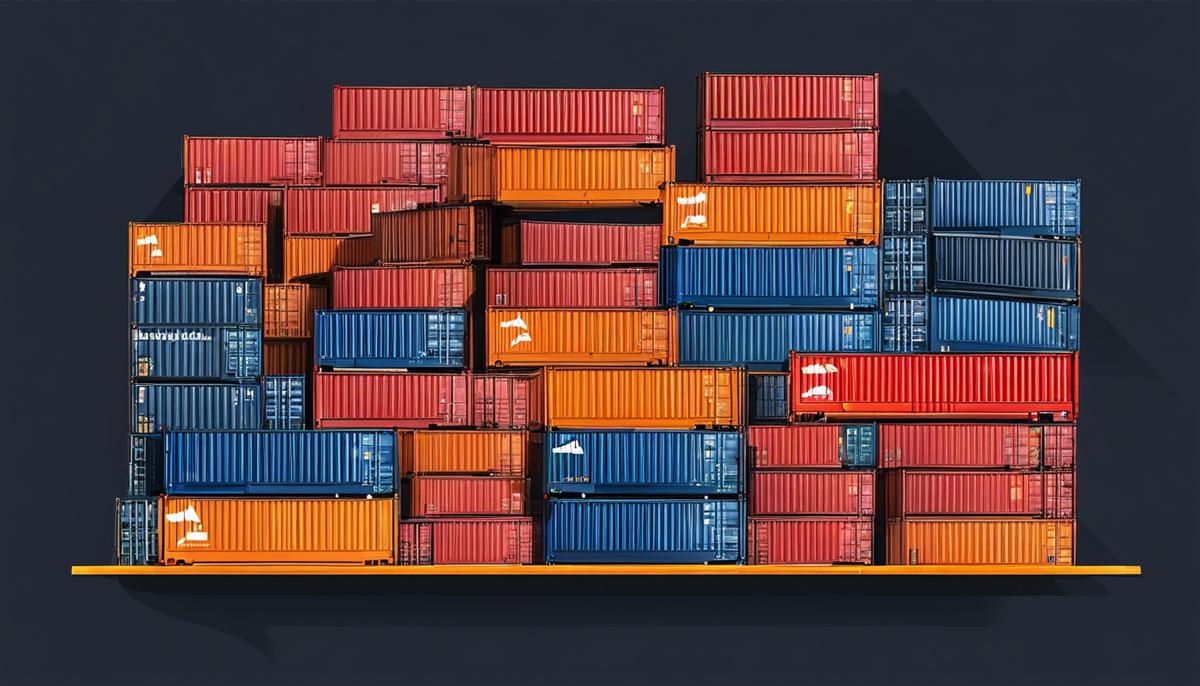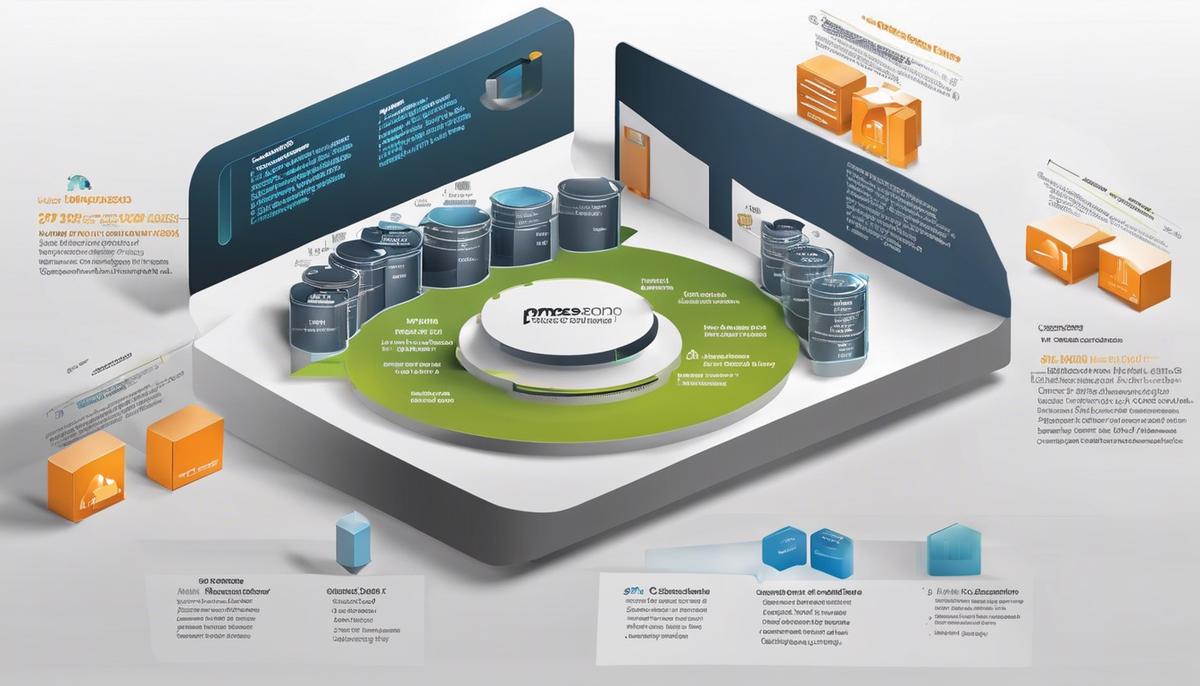Warning: count(): Parameter must be an array or an object that implements Countable in /home/frankaho/thestrugglingdeveloper.com/wp-content/plugins/website-monetization-by-magenet/MagenetLinkAutoinstall.php on line 492
Technological advancements continue to redefine the way businesses operate, introducing efficient solutions to tackle various issues. A prominent player in this digital evolution is the Amazon Elastic Container Registry (AWS ECR), a managed container image registry service. Ensuring a thorough understanding of AWS ECR, its essence, functionality and relevance in the tech industry can lead to optimal utilization of this tool. This in-depth exploration detailing every facet of AWS ECR, from its creation and management to its security aspects and troubleshooting strategies, provides comprehensive insight into this integral technology.
Understanding AWS ECR and its relevance
AWS ECR: A Game-Changer in the Tech Sphere
The tech industry is ceaselessly evolving with new innovations cropping up now and then. If one wants to stay afloat and thrive in this dynamic domain, it is paramount to remain updated with the latest trends and tools. One such tool that has been stirring the tech world lately is AWS ECR (Amazon Web Services Elastic Container Registry). This service offers an edge by enabling the storage, management, and deployment of Docker container images, with almost seamless compatibility with other AWS services.
Understanding AWS ECR
In layman’s terms, AWS ECR is a fully managed Docker container registry that makes it easy for developers to store, manage, and deploy Docker container images. Docker is an open-source tool designed to automate the deployment, scaling, and management of applications within containers — a type of lightweight, standalone, executable software package. AWS ECR eliminates the time-consuming steps of setting up and maintaining your container registry.
Why is AWS ECR Significant?
Automation and efficiency are the lifelines of the tech industry. With AWS ECR, these aspects are comfortably embedded within its functionalities. Let’s delve into the reasons that posit AWS ECR as an indispensable asset for tech enthusiasts.
Scalability:One of the critical aspects of AWS ECR is its propensity to scale automatically to meet the requirements of an application. It does not limit how much or how large an image can be, making it the perfect choice for enterprises dealing with hefty applications.
Security:In the digital age, cybersecurity is of utmost importance. AWS ECR employs resource-based permissions that allow the granting or denial of access to images based on the AWS IAM policies attached, thereby ensuring optimum security.
Integration:AWS ECR integrates almost effortlessly with AWS services like Amazon ECS, Amazon EKS, AWS Lambda, and the Docker CLI, allowing for a more simplified workflow.
Reliability:AWS ECR allows the replication of images to multiple AWS regions, ensuring high availability and redundancy. This ability to replicate and retrieve images from multiple regions makes AWS ECR a reliable solution for global deployments.
Cost-effective:On a practical note, AWS ECR charges only for the amount of data stored in the repositories and data transferred to the Internet, making it a cost-effective solution.
In the contemporary tech landscape, it’s no longer surprising that AWS ECR is gaining traction. Its scalability, security, and integration capabilities streamline container-based workflows. For organizations riding the wave of cloud computing and automation, recognizing the importance of AWS ECR and how it can ultimately transform their operational efficiencies is indispensable.
Stay on top of the game with AWS ECR, because the future of technology is all about smarter, quicker, and more secure operations. Adapt and adopt the right tools like AWS ECR to ensure a smooth sail in the tech sea. Evolve with technology, because change is not only inevitable but indispensable in this rapidly advancing world.

Creation and Management of AWS ECR Images
Mastering AWS ECR Image Creation and Management: A Guide for Tech Enthusiasts
As formidable as AWS ECR may sound to some, to a tech enthusiast, there is nothing more exhilarating than deciphering the details of this Amazon service. The focus now turns to the pivotal junction: creating and managing images effectively within AWS ECR.
While the groundwork on AWS ECR’s purpose, benefits, structure, and integrations is well laid, mastering image creation and management requires a hands-on approach rooted in practical understanding.
Bearing in mind AWS ECR’s automation of container registries setup and maintenance, let’s explore the necessary steps and strategies to effectively manage these processes.
Creating an AWS ECR Repository
Creating a repository within AWS ECR is a fairly straightforward process, albeit one that compels an understanding of command-line interfaces. With AWS CLI installed and configured, the aws ecr create-repository command followed by a repository name will do the trick.
The resultant JSON output provides critical information such as the repository URI, which becomes the pull/push point for Docker images.
Managing AWS ECR Images
Creating images is one thing; managing them is another. AWS ECR grants the ability to list, describe, and delete images in a secure and efficient manner.
Using aws ecr list-images and aws ecr describe-images commands, one can get a complete snapshot of the existent images. The aws ecr batch-delete-image command is a useful tool to delete multiple images simultaneously based on the imageDigest or imageTag.
Implementing Lifecycle Policies
One of the notable features of AWS ECR is its lifecycle policies that assist in image management. These policies enable automated image cleanup based on conditions defined in JSON format. Whether you’re hoping to retain only the most recent images or wish to delete untagged ones, these policies hold the key to orderly image management.
Creating an AWS ECR lifecycle policy finds its roots in yet another command, aws ecr put-lifecycle-policy, followed by policy details and repository name. Understanding and mastering lifecycle policies can save storage costs and maintain repository hygiene.
Securing ECR Interaction
With knowledge on AWS ECR’s resource-based permissions, it is prudent to secure the ECR interaction via IAM policies. Assigning users specific roles such as pushers or pullers of images, or administrators can ensure control and log activities.
In summing up, it’s vital to note the command-line proficiency required to effectively manage AWS ECR Images. As tech enthusiasts steering towards containerization, it’s a skill set worth mastering. While the learning curve may seem steep, the rewards in terms of scalability, reliability, and cost-effectiveness are indeed promising. AWS ECR is a prime example of how adopting new technological advances can elevate one’s game in the ever-evolving tech ecosystem.

Security Aspects of AWS ECR Images
Moving forward, a detailed understanding of the AWS ECR security mechanisms is key to making full use of this product. In essence, AWS ECR’s security is centered on secure access and secure image sharing. Every image placed into ECR is automatically stored encrypted at rest with server-side AES-256 encryption. Furthermore, ECR uses AWS Key Management Service (AWS KMS) keys, either chosen by user or default customer master keys, to encrypt images.
Diving deeper into the aspect of secure access, it is integral to highlight the combination of AWS Identity and Access Management (IAM) and resource-based permissions. IAM roles assigned to an Amazon EC2 instance provide permissions that determine who is allowed to access and manage AWS ECR images. These granular access controls allow the exact configuration that developers require to keep their applications secure.
The other half of the equation, secure image sharing, makes it possible to share container software privately within the organization or publicly across the world. Private sharing within the AWS organization is made possible by ECR’s integration with AWS Resource Access Manager (RAM). On the other hand, public image sharing is facilitated through public repositories in ECR. Authentication tokens which are offered by AWS ECR guarantee that only authenticated users get access, providing an extra layer of security.
In terms of handling AWS ECR images, users can interface with AWS CLI ver2 command line. This tool can handle almost all management tasks, including creating, describing, and deleting repositories, as well as listing all images within a repository.
Moreover, AWS ECR users should be cognizant of implementing lifecycle policies to effectively manage the storage of images. Without them, things could go pear-shaped, as these policies establish automatic image cleanup, leading to cost savings by only keeping necessary images and mitigating potential security risks.
Finally, the key to mastering AWS ECR does not solely lie in its features but also in its integration with other AWS services – more so Kubernetes services. This takes advantage of the native Kubernetes integration with AWS IAM for Service Accounts to seamlessly authenticate and authorize ECR image pulls.
In conclusion, AWS ECR fundamentally alters the dynamics of modern containerized applications by offering essential container services with extensive security controls. The tech world can only marvel at the impressive capabilities that AWS ECR offers and the boundless opportunities we can unlock by harnessing its potential. Innovative problem solvers can dare to dream big and make significant strides in operational efficiencies, all while enjoying the inherent security AWS ECR offers.

Troubleshooting and Optimizing AWS ECR Images
Diving into the realm of troubleshooting and optimizing AWS ECR images, there are several strategies that can be adopted. AWS ECR (Elastic Container Registry) forms the nerve center of containerized applications, providing a secure, scalable, and simplified way to manage Docker images and Helm Chart repositories. While the features may be vast, the real test comes in handling the hiccups that arise and the continuous pursuit of optimization.
Looking at troubleshooting first. When issues come up, it’s worth starting with the basics. Check the image manifest and ensure it’s correct. Verify image tags and digest values. Cross-checking these against the AWS ECR documentation can shine a light on discrepancies or irregularities.
Confirm the validity of the authentication tokens being used. Erroneous tokens can lead to interruptions in access or data transfer issues. AWS CLI or AWS SDKs may be used to get a fresh batch of tokens, thereby improvising security and reducing disruptions.
AWS provides CloudTrail, a powerful tool for troubleshooting. When operating with AWS ECR, CloudTrail offers complete visibility into the activity around the images, capturing all API calls for ECR including calls from the ECR console and code calls to the ECR APIs. This tool can be especially helpful in tracing the root cause of a problem.
For the optimization front, consider these strategies. Monitor Docker images size because large image sizes can have a profound impact on deployment times and cause potential timeout issues. Regularly cleaning up unused or old images can help in efficient resource usage.
Lifecycle Policy plays a role here, allowing one to set up control over the image versions stored in the repository. These rules can be structured based on image tags, count or age, automatically managing the lifecycle of the images, and cardinal in keeping cost at bay by reducing unnecessary storage.
The use of Image Scanning is primarily to detect vulnerabilities in your images. AWS ECR offers automatic scanning on push and manual scanning on pull, making it a vital optimization tool. These scan results are accessible for up to 30 days from the scan and can be configured to receive notifications upon detection of vulnerabilities.
Server connection draining could potentially increase optimization. Connection draining stops new requests from being routed to a deregistering container and keeps it in service until ongoing requests complete or till the draining timeout elapses.
Thus, strategically approaching AWS ECR troubleshooting and optimization requires a balance of in-sight, right tools and effective strategies. Leveraging these techniques can not only ensure smooth functioning but also construct a robust and efficient containerization environment. As we march forward in the tech landscape, there’s an undeniable truth — mastering the latest technology like AWS ECR is not just about survival, it’s about thriving in a fast-paced digital ecosystem.

As AWS ECR continues to shape the tech industry profoundly, a comprehensive understanding of its functionalities, management strategies, security aspects, and troubleshooting mechanisms becomes increasingly essential. With the insights provided, anyone can successfully navigate the challenges and complexities that come with handling AWS ECR images. By embracing the best practices, tips, and tricks shared, the optimum use and benefit of AWS ECR images can be assured, setting the right pace for bolstering efficiency and productivity across digital platforms.
Writio: The AI content writer that crafts flawless articles for websites. This page was created by Writio.
